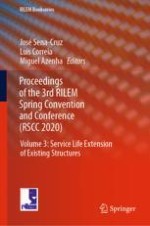2022 | OriginalPaper | Buchkapitel
Efficient Labelling of Air Voids in Hardened Concrete for Neural Network Applications Using Fused Image Data
verfasst von : Fabian Diewald, Nicolai Klein, Maximilian Hechtl, Thomas Kraenkel, Christoph Gehlen
Erschienen in: Proceedings of the 3rd RILEM Spring Convention and Conference (RSCC 2020)
Aktivieren Sie unsere intelligente Suche, um passende Fachinhalte oder Patente zu finden.
Wählen Sie Textabschnitte aus um mit Künstlicher Intelligenz passenden Patente zu finden. powered by
Markieren Sie Textabschnitte, um KI-gestützt weitere passende Inhalte zu finden. powered by
